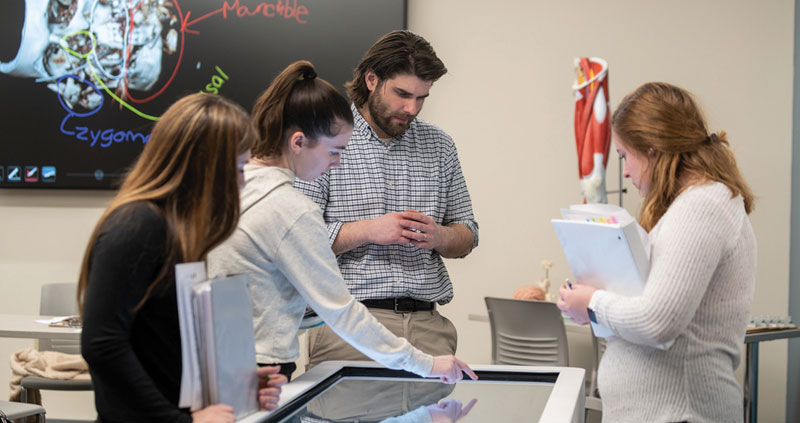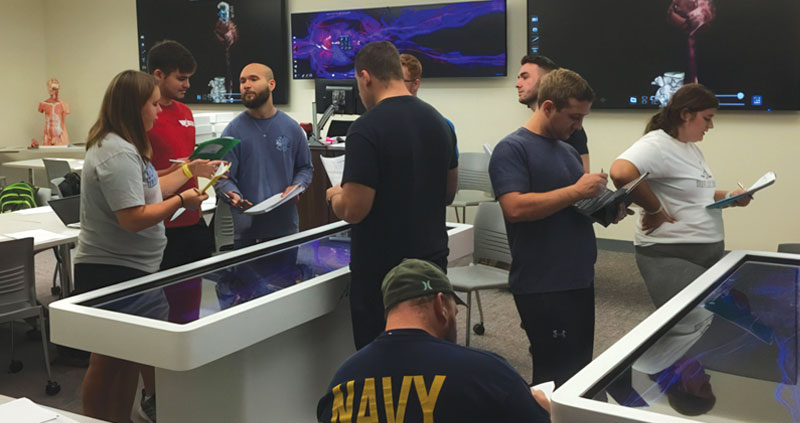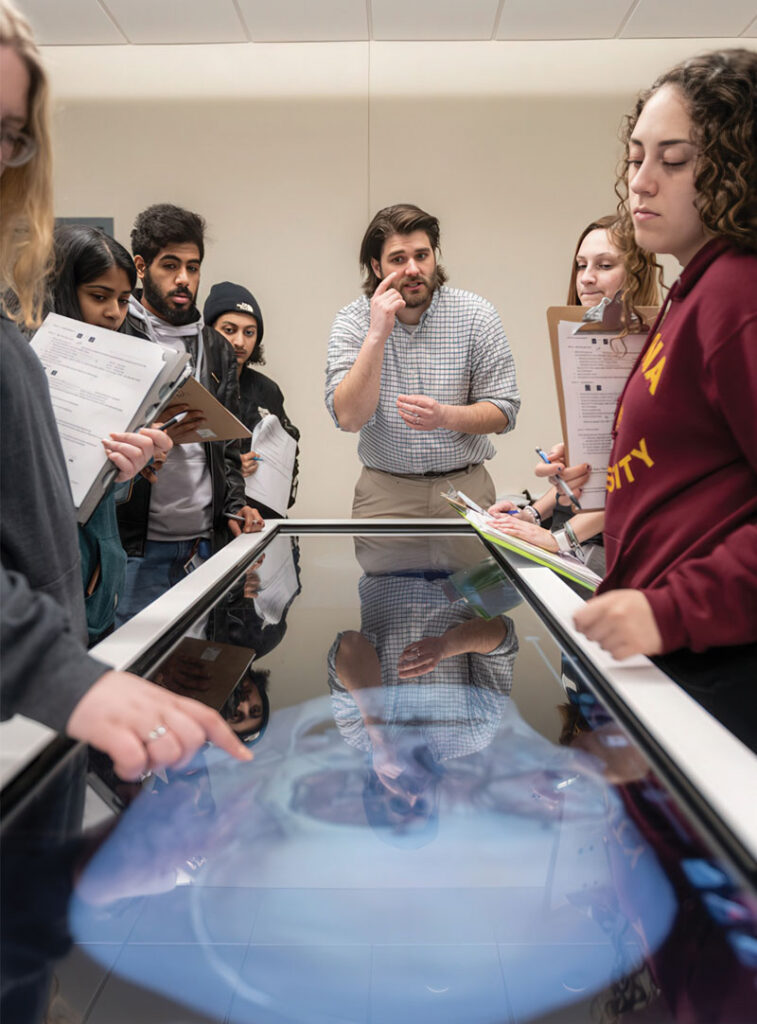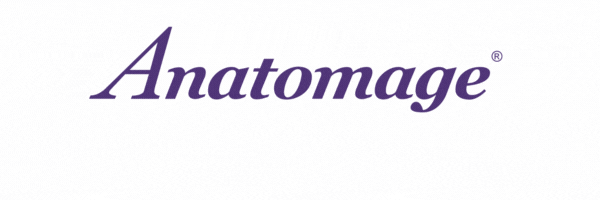Case Study: Alvernia University
Case Study:
Alvernia University
Making Anatomy Accessible: How Alvernia University Uses Anatomage Tables to Drive Postgraduate Student Success
Meeting Accreditation Requirements While Reducing Costs with 3D Virtual Cadaver Dissection
In 2019, Alvernia University needed a solution for a continuing challenge: how to deliver high-quality gross anatomy education and meet accreditation standards for several advanced degree programs, all without maintaining an in-house cadaver lab. Renting lab space from a neighboring university was costly and logistically complex, but cadaveric dissection remained a necessity for both quality and competence standards. At the same time, Alvernia was preparing to open a new campus building, an investment that provided the opportunity to rethink how anatomy instruction could be delivered.
The university turned to the Anatomage Table as a modern alternative to traditional cadaveric dissection, with technology that would allow students to gain the same foundational anatomical knowledge while offering flexibility, accessibility, and long-term cost savings.
Challenge
Before 2019, Alvernia University’s Doctor of Physical Therapy (DPT) and Master of Science in Athletic Training (MSAT) programs relied on a partnership with a nearby institution for access to cadaver labs, a solution that was expensive and inconvenient. Accrediting bodies for both fields required cadaveric dissection, but renting facilities off-site affected budgets and complicated scheduling.
With their programs in physical therapy, athletic training, and eventually physician associate (PA) studies, the university needed a scalable solution that would:
- Accreditate the programs in their respective fields.
- Reduce repeated costs associated with outsourcing cadaver labs.
- Provide hands-on, interactive learning experiences.
Solution
In 2019, Alvernia University acquired its first Anatomage Tables for the DPT and MSAT programs. Soon after, the PA program purchased additional units, bringing the university’s total to eight Tables. Dr. Eric Recktenwald, an associate professor who joined the DPT faculty that same year, quickly became the lead faculty member responsible for integrating the technology into anatomy instruction.

As Dr. Recktenwald explained, “The accrediting body accepts virtual dissection as well as cadaveric dissection. For us, the Anatomage Tables replaced the cadaver dissections that we were essentially renting from another university.” The Tables are now central to Dr. Recktenwald’s Gross Anatomy and Histology course, which combines lectures with interactive lab-based learning. Dr. Recktenwald structures each class into different sections, introducing a region of the body through traditional lecture, followed by hands-on exploration on the Tables. The curriculum also leverages the Tables’ quiz functionality as a cornerstone of student learning, with students converting comprehensive structure lists into personalized “pick me” quizzes that they use for continuous self-assessment.
“As I’m introducing the structures, I’ll have students at the Anatomage Tables highlighting them,” shared Dr. Recktenwald. “Then they spend a lot of time just quizzing themselves over and over [until] they master that chunk of information. And then we’ll move on to the next region.”

Crucially, the Tables, kept in the university’s Virtual Dissection Laboratory, are also available outside of scheduled class hours, giving students daily access for independent study. What began as a class-only resource has evolved into a student-driven tool for ongoing mastery.
The biggest positive from having the Anatomage Tables has been the fact that if a student is motivated to do well in the course, it's achievable, it's going to happen. They have access to this resource almost 24/7 so if they put the time in, they're going to do well.
Dr. Eric Recktenwald, Associate Professor of Biology and Physical Therapy at Alvernia University
Results
The integration of the Anatomage Tables has fundamentally reshaped anatomy education at Alvernia University. The Tables’ virtual dissection capabilities allow each program to meet the standards of their accrediting bodies, including CAPTE for physical therapy, CAATE for athletic training, and ARC-PA for physician assistant education. Plus, beyond eliminating the recurring expense of cadaver rentals, the Tables have delivered unexpected but welcome benefits in student comprehension and engagement.
Students consistently demonstrate stronger comprehension by practicing directly on the same 3D visualizations used in their exams. Classroom engagement has also transformed notably, with traditionally passive students becoming actively involved once Table sessions begin. “There’s always about 30% of the class that isn’t really engaged at all when I’m doing the lecturing,” shared Dr. Recktenwald. “When I do allow them to then work on the Tables, they jump right up and get into it right away. They are really engaged, just dialed in.”

What actually surprised faculty was the sheer volume of voluntary practice students would have with the Tables. When they were first introduced, the most common student feedback involved requests for additional Table time, leading the university to expand availability to around-the-clock access. Some students average an additional two hours a day using the Tables outside of class, and student feedback consistently highlights the Tables’ impact, with course evaluations regularly mentioning the technology’s value.
By adopting Anatomage Tables, the university has created a scalable, student-centered approach to anatomy education that meets accreditation standards while saving the institution significant costs. The Tables have become a cornerstone of the DPT and PA programs, enabling deeper comprehension, stronger engagement, and consistent student success. With eight Tables now across campus, Alvernia University has positioned itself as a leader in modern anatomy education — proving that high-quality training doesn’t require a traditional cadaver lab, but instead, the right combination of technology, faculty innovation, and student access.
All photos provided by Alvernia University
